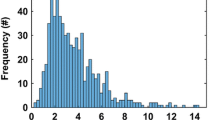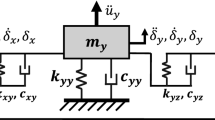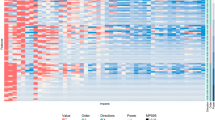Abstract
Diffuse brain injuries are caused by excessive brain deformation generated primarily by rapid rotational head motion. Metrics that describe the severity of brain injury based on head motion often do not represent the governing physics of brain deformation, rendering them ineffective over a broad range of head impact conditions. This study develops a brain injury metric based on the response of a second-order mechanical system, and relates rotational head kinematics to strain-based brain injury metrics: maximum principal strain (MPS) and cumulative strain damage measure (CSDM). This new metric, universal brain injury criterion (UBrIC), is applicable over a broad range of kinematics encountered in automotive crash and sports. Efficacy of UBrIC was demonstrated by comparing it to MPS and CSDM predicted in 1600 head impacts using two different finite element (FE) brain models. Relative to existing metrics, UBrIC had the highest correlation with the FE models, and performed better in most impact conditions. While UBrIC provides a reliable measurement for brain injury assessment in a broad range of head impact conditions, and can inform helmet and countermeasure design, an injury risk function was not incorporated into its current formulation until validated strain-based risk functions can be developed and verified against human injury data.






Similar content being viewed by others
References
Alshareef, A., J. S. Giudice, J. Forman, R. S. Salzar, and M. B. Panzer. A novel method for quantifying human in situ whole brain deformation under rotational loading using sonomicrometry. J. Neurotrauma 2017. https://doi.org/10.1089/neu.2017.5362.
Department of Transportation NHTSA Docket Number 69-7, Notice 19. Occupant Crash Protection: Head Injury Criterion, S6.2 of MVSS 208.
Elkin, B. S., and B. Morrison, III. Region-specific tolerance criteria for the living brain. Stapp Car Crash J. 51:127–138, 2007.
Forman, J., J. Michaelson, R. Kent, S. Kuppa, and O. Bostrom. Occupant restraint in the rear seat: ATD responses to standard and pre-tensioning, force-limiting belt restraints. Ann. Adv. Automot. Med. 52:141–154, 2008.
Frieden, T. R., D. Houry, and G. Baldwin. Report to Congress on Traumatic Brain Injury in the United States: Epidemiology and Rehabilitation. Atlanta, GA: National Center for Injury Prevention and Control, Division for Unintentional Injury Prevention, 2015.
Gabler, L. F., J. R. Crandall, and M. B. Panzer. Investigating brain injury tolerance in the sagittal plane using a finite element model of the human head. Int. J. Automot. Eng. 7:37–43, 2016.
Gabler, L. F., J. R. Crandall, and M. B. Panzer. Assessment of kinematic brain injury metrics for predicting strain responses in diverse automotive impact conditions. Ann. Biomed. Eng. 2016. https://doi.org/10.1007/s10439-016-1697-0.
Gabler, L. F., H. Joodaki, J. R. Crandall, and M. B. Panzer. Development of a single-degree-of-freedom mechanical model for predicting strain-based brain injury responses. J. Biomech. Eng. 2017. https://doi.org/10.1115/1.4038357.
Gadd, C. W. Use of a Weighted-Impulse Criterion for Estimating Injury Hazard. SAE Technical Paper, 1966.
Gennarelli, T. A., L. E. Thibault, and A. K. Omaya. Comparison of linear and rotational acceleration in experimental cerebral concussion. Proc. 15th Stapp Car Crash Conf., New York, 1971.
Greenwald, R. M., J. T. Gwin, J. J. Chu, and J. J. Crisco. Head impact severity measures for evaluating mild traumatic brain injury risk exposure. Neurosurgery 62:789, 2008.
Hardy, W. N., C. D. Foster, M. J. Mason, K. H. Yang, A. I. King, and S. Tashman. Investigation of head injury mechanisms using neutral density technology and high-speed biplanar X-ray. Stapp Car Crash J. 45:337–368, 2001.
Hardy, W. N., M. J. Mason, C. D. Foster, C. S. Shah, J. M. Kopacz, K. H. Yang, A. I. King, J. Bishop, M. Bey, W. Anderst, et al. A study of the response of the human cadaver head to impact. Stapp Car Crash J. 51:17, 2007.
Harmon, K. G., J. A. Drezner, M. Gammons, K. M. Guskiewicz, M. Halstead, S. A. Herring, J. S. Kutcher, A. Pana, M. Putukian, and W. O. Roberts. American Medical Society for Sports Medicine position statement: concussion in sport. Br. J. Sports Med. 47:15–26, 2013.
Holbourn, A. H. S. Mechanics of head injuries. Lancet 242:438–441, 1943.
J211/1: Instrumentation for Impact Test—Part 1—Electronic Instrumentation. Warrendale, PA: SAE International.
Ji, S., and W. Zhao. A pre-computed brain response atlas for instantaneous strain estimation in contact sports. Ann. Biomed. Eng. 43:1877–1895, 2015.
Kimpara, H., and M. Iwamoto. Mild traumatic brain injury predictors based on angular accelerations during impacts. Ann. Biomed. Eng. 40:114–126, 2012.
King, A. I., K. H. Yang, L. Zhang, W. Hardy, and D. C. Viano. Is head injury caused by linear or angular acceleration. IRCOBI Conf., Lisbon, Portugal, September 2003.
Kleiven, S. Influence of impact direction on the human head in prediction of subdural hematoma. J. Neurotrauma 20:365–379, 2003.
Kleiven, S. Predictors for traumatic brain injuries evaluated through accident reconstructions. Stapp Car Crash J. 51:81–114, 2007.
Laituri, T. R., R. E. El-Jawahri, S. Henry, and K. Sullivan. Field-Based Assessments of Various AIS2+ Head Risk Curves for Frontal Impact. SAE Technical Paper, 2015.
Lobo, B., R. Lin, D. Brown, T. Kim, and M. Panzer. Predicting pedestrian injury metrics based on vehicle front-end design. In: Internet of Vehicles—Safe and Intelligent Mobility. Cham: Springer, 2015, pp. 114–126.
Mao, H., L. Zhang, B. Jiang, V. V. Genthikatti, X. Jin, F. Zhu, R. Makwana, A. Gill, G. Jandir, A. Singh, et al. Development of a finite element human head model partially validated with thirty five experimental cases. J. Biomech. Eng. 135:111002, 2013.
Margulies, S. S., and L. E. Thibault. A proposed tolerance criterion for diffuse axonal injury in man. J. Biomech. 25:917–923, 1992.
Milton, S. J., and J. C. Arnold. Introduction to Probability and Statistics Principles and Applications for Engineering and the Computing Sciences. New York: McGraw-Hill College, 2002.
Mueller, B., A. MacAlister, J. Nolan, and D. Zuby. Comparison of HIC and BRIC head injury risk in IIHS frontal crash tests to real-world head injuries. Proc. 24th Int. Tech. Conf. Enhanc. Saf. Veh., 2015.
National Operating Committee on the Standards for Athletic Equipment (NOCSAE). Standard Test Method and Equipment Used in Evaluating the Performance Characteristics of Protective Headgear/Equipment, 2012.
Newman, J. A generalized acceleration model for brain injury threshold (GAMBIT). Proc. 1986 Int. IRCOBI Conf. Biomech. Impact, 1986.
Newman, J. A., N. Shewchenko, and E. Welbourne. A proposed new biomechanical head injury assessment function—the maximum power index. Stapp Car Crash J. 44:215–247, 2000.
NHTSA NVS | Vehicle Crash Test Database. www.nrd.nhtsa.dot.gov/database/VSR/veh/QueryTest.
Panzer, M. B., B. S. Myers, B. P. Capehart, and C. R. Bass. Development of a finite element model for blast brain injury and the effects of CSF cavitation. Ann. Biomed. Eng. 40:1530–1544, 2012.
Patrick, L. M., H. R. Lissner, and E. S. Gurdjian. Survival by design: head protection. Proc. 7th Stapp Car Crash Field Demonstr. Conf., 1963.
Rowson, S., and S. M. Duma. Brain injury prediction: assessing the combined probability of concussion using linear and rotational head acceleration. Ann. Biomed. Eng. 41:873–882, 2013.
Sanchez, E. J., L. F. Gabler, J. S. McGhee, A. V. Olszko, V. C. Chancey, J. Crandall, and M. B. Panzer. Evaluation of head and brain injury risk functions using sub-injurious human volunteer data. J. Neurotrauma 2017. https://doi.org/10.1089/neu.2016.4681.
Santiago, L. A., B. C. Oh, P. K. Dash, J. B. Holcomb, and C. E. Wade. A clinical comparison of penetrating and blunt traumatic brain injuries. Brain Inj. 26:107–125, 2012.
Saunders, J., D. Parent, and E. Ames. NHTSA oblique crash test results: vehicle performance and occupant injury risk assessment in vehicles with small overlap countermeasures. In: The 24th International Technical Conference for the Enhanced Safety of Vehicles, 2015.
Sullivan, S., et al. White matter tract-oriented deformation predicts traumatic axonal brain injury and reveals rotational direction-specific vulnerabilities. Biomech. Model. Mechanobiol. 14:877–896, 2015.
Takhounts, E. G., V. Hasija, S. A. Ridella, S. Rowson, and S. M. Duma. Kinematic Rotational Brain Injury Criterion (BRIC). Paper Number: 11-026, 2011.
Takhounts, E. G., S. A. Ridella, V. Hasija, R. E. Tannous, J. Q. Campbell, D. Malone, K. Danelson, J. Stitzel, S. Rowson, and S. Duma. Investigation of traumatic brain injuries using the next generation of simulated injury monitor (SIMon) finite element head model. Stapp Car Crash J. 52:1–31, 2008.
Takhounts, E. G., M. J. Craig, K. Moorhouse, J. McFadden, and V. Hasija. Development of brain injury criteria (Br IC). Stapp Car Crash J. 57:243–266, 2013.
Taylor, C. A. Traumatic brain injury-related emergency department visits, hospitalizations, and deaths—United States, 2007 and 2013. MMWR Surveill. Summ. 2017. https://doi.org/10.15585/mmwr.ss6609a1.
Thibault, L. E., and T. A. Gennarelli. Biomechanics of Diffuse Brain Injuries. SAE Technical Paper, 1985.
Versace, J. A Review of the Severity Index. Warrendale, PA: SAE International, 1971.
Viano, D. C., C. Withnall, and D. Halstead. Impact performance of modern football helmets. Ann. Biomed. Eng. 40:160–174, 2012.
von Gierke, H. E. Transient acceleration, vibration and noise problems in space flight. In: Bioastronautics, edited by K. E. Schaefer. New York: Mac-Millan Co., 1964, p. 61.
Yanaoka, T., Y. Dokko, and Y. Takahashi. Investigation on an Injury Criterion Related to Traumatic Brain Injury Primarily Induced by Head Rotation. SAE Technical Paper, 2015.
Acknowledgments
The authors thank the Partnership for Dummy Technology and Biomechanics (PDB) for support and funding for this research.
Author information
Authors and Affiliations
Corresponding author
Additional information
Associate Editor Stefan M Duma oversaw the review of this article.
Electronic supplementary material
Below is the link to the electronic supplementary material.
Rights and permissions
About this article
Cite this article
Gabler, L.F., Crandall, J.R. & Panzer, M.B. Development of a Metric for Predicting Brain Strain Responses Using Head Kinematics. Ann Biomed Eng 46, 972–985 (2018). https://doi.org/10.1007/s10439-018-2015-9
Received:
Accepted:
Published:
Issue Date:
DOI: https://doi.org/10.1007/s10439-018-2015-9




